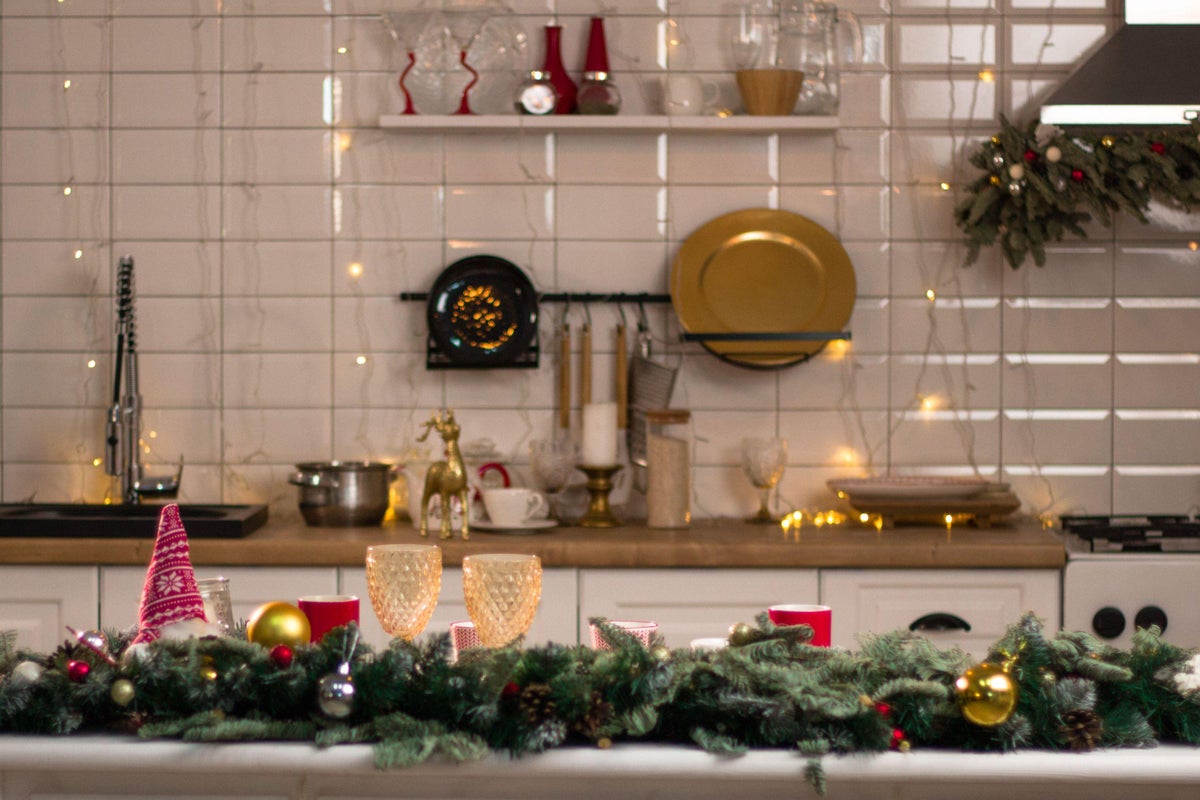Christmas Kitchen Makeovers Are the New Culture War, Pitting Traditionalists Against Modern Minimalists in a Battle for Holiday Supremacy
As the holiday season approaches, the kitchen often becomes the heart of the home, where families gather to celebrate, cook, and create memories. However, the way we choose to decorate and prepare our kitchens for Christmas can spark a cultural debate that mirrors the larger societal divisions we see today. This year, the festive kitchen makeover has emerged as a battleground, with traditionalists clinging to nostalgic decor while modern minimalists advocate for a sleeker, more functional aesthetic.
The kitchen has always been a symbol of warmth and comfort, especially during the holidays. For many, it evokes memories of family gatherings, the aroma of baked goods, and the joy of shared meals. Yet, as tastes evolve, so do the expectations surrounding holiday decor. Traditionalists often favor rich colors, elaborate ornaments, and time-honored decorations that reflect the spirit of Christmas as they remember it. This perspective is rooted in the belief that certain customs and styles are essential to preserving the holiday’s true meaning.
On the other side of the spectrum, modern minimalists argue for a more streamlined approach to holiday decorating. They advocate for clean lines, neutral palettes, and functional spaces that prioritize practicality over sentimentality. This perspective reflects a broader cultural shift towards simplicity and efficiency in our lives, mirroring trends in technology, fashion, and even politics. The minimalist approach to holiday decor challenges the notion that more is better, suggesting instead that less can be more meaningful.
This clash of ideologies extends beyond mere aesthetics; it touches on deeper themes of identity, belonging, and the values we hold dear. The traditionalist viewpoint often emphasizes the importance of heritage and continuity, suggesting that by maintaining certain practices, we honor our ancestors and the spirit of the season. Conversely, the minimalist perspective can be seen as a rejection of consumerism and excess, advocating for a more mindful and intentional approach to how we celebrate.
As families prepare for the holiday season, the kitchen becomes a reflection of these competing ideologies. Those who embrace traditional decor may fill their spaces with garlands, twinkling lights, and heirloom ornaments, creating an atmosphere that is rich with history and sentiment. In contrast, minimalists might opt for a few carefully chosen elements, such as a simple wreath or a single centerpiece, focusing on the essence of the holiday rather than its trappings.
The debate over how to decorate for Christmas is not just about personal preference; it also raises questions about the role of tradition in our lives. Are we bound to uphold the customs of the past, or is there room for evolution and change? This question resonates deeply in a society that often grapples with the tension between honoring history and embracing progress.
Moreover, the kitchen’s role as a gathering place during the holidays underscores the importance of how we choose to present our homes. It is where we come together to share meals, exchange stories, and create lasting memories. The way we decorate our kitchens can influence the atmosphere of these gatherings, shaping the experiences we share with loved ones. Thus, the stakes are high in this cultural debate, as the choices we make reflect our values and priorities.
As the festive season draws near, it is essential to recognize that both traditional and minimalist approaches to kitchen decor have their merits. Traditionalists may find comfort in the familiar, while minimalists may appreciate the clarity and focus that simplicity brings. Ultimately, the kitchen can be a space that accommodates both perspectives, allowing for a rich tapestry of holiday experiences that honor the past while embracing the present.
In this context, the kitchen becomes a microcosm of the broader cultural landscape, where differing opinions and values collide. The choices we make about how to decorate and prepare for the holidays can serve as a reflection of our identities and beliefs. As families navigate this terrain, they may find themselves engaging in conversations that go beyond mere aesthetics, delving into the heart of what Christmas means to them.
The festive kitchen makeover has the potential to be a unifying experience, bringing together diverse perspectives and fostering dialogue about the values we hold dear. By embracing the richness of both traditional and modern approaches, families can create spaces that resonate with their unique histories and aspirations. In doing so, they may discover that the true spirit of Christmas lies not in the decorations themselves, but in the love and connection that these spaces inspire.
As the holiday season approaches, the kitchen stands ready to become a canvas for creativity and expression. Whether adorned with nostalgic ornaments or minimalist accents, it serves as a reminder of the beauty of diversity and the importance of coming together in celebration. The choices we make in our kitchens can reflect our values, our stories, and our hopes for the future, creating a vibrant tapestry of holiday experiences that honor both tradition and innovation.




